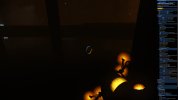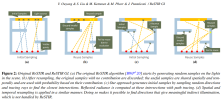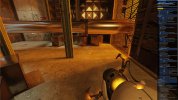Not sure whether RTXDI and direct lighting are additive in Portal, it doesn't make a lot of sense given how the direct lighting option is seemingly still RT (adds noise). It looks like direct lighting is some basic RT sampling and RTXDI is more advanced importance sampling with spatiotemporal reuse of the most influential lights. I doubt that RTXDI works on top of Direct Lighting, it doesn't make any sense since Direct Lighting is too noisy by itself (analytical rasterization lighting does not introduce noise since it doesn't do stochastic sampling). I guess the Direct Lighting option is just for comparisons with RTXDI, i.e. to showcase how RTXDI improves image on top of basic direct lighting sampling.

















